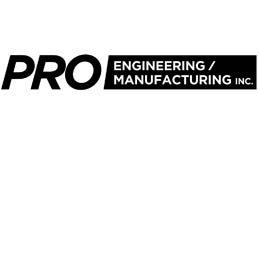Simulation of Tunnel Pasteurization using a Triple Temperature Spray Batch Pasteurizer
By Edward A. Michalski
CEO
PRO Engineering/Manufacturing, Inc.
Overall, pasteurization has been shown to be effective against a wide variety of pathogens and improves the shelf life of products. Two of the widely used types of pasteurization in the industry today are tunnel and batch pasteurization. However, the cost of this heat treatment and its complexity depends on the size of the production facility and other factors such as the pasteurizer’s water and energy expenditure.
Spray-based pasteurizers apply the theory of heat transfer using sprayed water at different temperatures onto the product container. Mixing of the liquid within the container occurs via thermal conduction and uses convection currents generated while the product is heated This circulatory motion across the surfaces reduces the internal surface resistance leading to uniformity in the product temperature.
Tunnel pasteurizers encompass an enclosed chamber divided into several spray zones. The tunnel usually ranges between 15 to 30 meters, in which the packages move through by a conveyor.
The zones include a heating zone where the temperature of the liquid being pasteurized is progressively raised to about 60°C (140°F); a pasteurization zone where the product is maintained at the desired temperature; and a cooling zone where the packages are cooled. The system includes a shell, tube heat exchangers, water heating, spray nozzles, conveyor mats and machine controls.
Batch pasteurizers, on the other hand, are designed to provide heat treatment to beverages in “batches,” contrasting to the continuous heat treatment process of the tunnel (and flash) pasteurization. Batch pasteurizers use heated water to raise the temperature of the product already packaged (i.e., cans or bottles). A less desirable type of batch pasteurizer uses a dip tank approach, where the containers are submerged into a tank filled with heated water and held for the required amount of time. Then they are lifted out to cool down afterwards. The problem with the batch tank design is that there can be uneven heating of the packaged liquid being pasteurized.
In the PRO batch family, PRO Engineering / Manufacturing Inc. has designed a Triple Temperature Spray Batch (Triple Temp for short) pasteurizer using hot and cold spray water from nozzles instead of immersion in tanks at different temperatures. This process simulates the temperature zones of a tunnel pasteurizer.
As stated, The Triple Temperature Spray Batch mimics the temperature profile of a tunnel pasteurizer, being an economically practical device that reveals the impact of various temperature profiles. Both methods of pasteurization (tunnel and batch) use the measure of a Pasteurization Unit (PU) to monitor the process and the “lethal effect” A 1PU is “added” to a product when exposed to 60°C (140°F) for one minute, although PU accumulation starts at 49°C (120°F)
The Triple Temp Batch is a convenient tool for labs, testing agencies, and research centers. The profiles and PUs can be adjusted to find the lethal spectrum from a low-temperature time duration to a high-temperature time duration to kill microbes and yeast.
The flexible parameters of a spray batch allow replicating a variety of full production scenarios. At the same time, they help to minimize energy and water usage. For example, heating of the spray water is done using an electric heater instead of a boiler and cooling is accomplished using chilled water.
A Triple Temp Batch can be used to verify if the normative time/temperature profile is the most energy efficient profile. Additionally, the machine can be used to determine how various temperature profiles may impact color, flavor, aroma, and density. The Triple Temp Batch can also run at production levels of output. The machine can process over 2,400 bottles or 3,000 cans up to 12 PU in an 8-hour shift.
PRO Engineering/Manufacturing, Inc. batch pasteurizers can be pallet-jacked for easy transportation and storage. Universities and research centers, along with the Quality Assurance departments of beverage bottlers can benefit from the compact unit that fits most anywhere. The machine cuts down on costs while having the advantages of a tunnel pasteurizer. The Triple Temp Batch from PRO is a most versatile pasteurizer.
For more information on tunnel and batch pasteurization contact PRO Engineering/Manufacturing, Inc. at [email protected] or call (414) 362-1500 and ask for Ed Michalski, CEO.
Edward A. Michalski Bio
Ed Michalski started his career in the beverage industry by designing stainless steel, higher flow, spray headers for Pabst Brewing. Along with the header design he also developed a process to produce the new headers.
Ed, along with his brother David, formed PRO Engineering/Manufacturing, Inc.
Based on what they learned by re-designing and refurbishing other manufacturers’ pasteurizers, Ed and PRO started to offer the pasteurizer marketplace superior new pasteurizers.
PRO Engineering/Manufacturing has been designing and manufacturing great pasteurizers for over four decades.

ABOUT US:
PRO Engineering/Manufacturing was established in 1977 by Ed and Dave Michalski as a steel fabrication shop. For more than 40 years, PRO Engineering/Manufacturing, Inc. has been delivering solutions for beverage product shelf stability and consumption safety. As leading innovators in post-fill pasteurization, our skilled team offers the best in high-quality pasteurization equipment.
CONTACT US:
Phone: 414-362-1500 | Email: [email protected]
Previous Article: A BASIC GUIDE TO PURCHASING AND USING TUNNEL PASTEURIZERS



